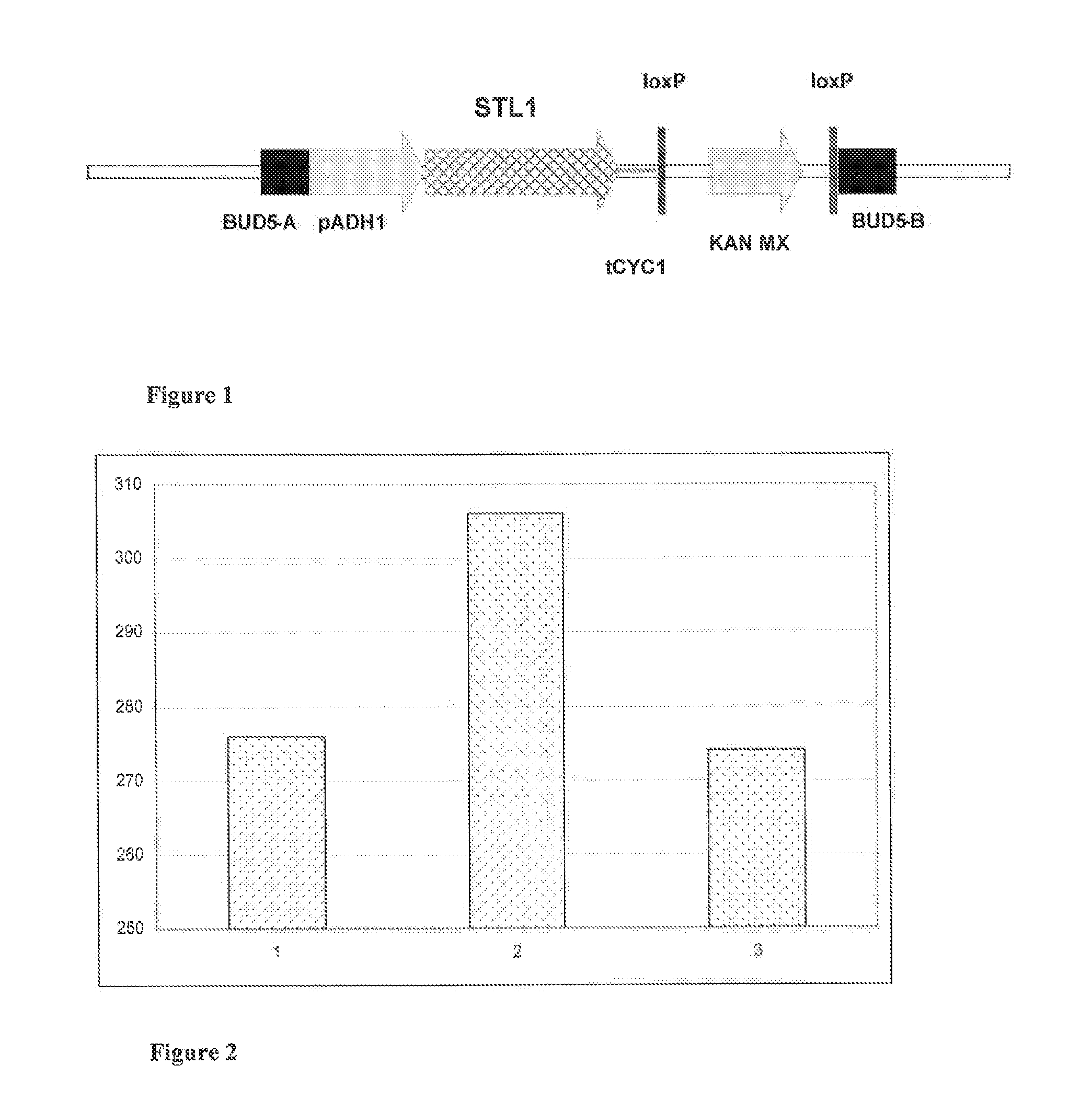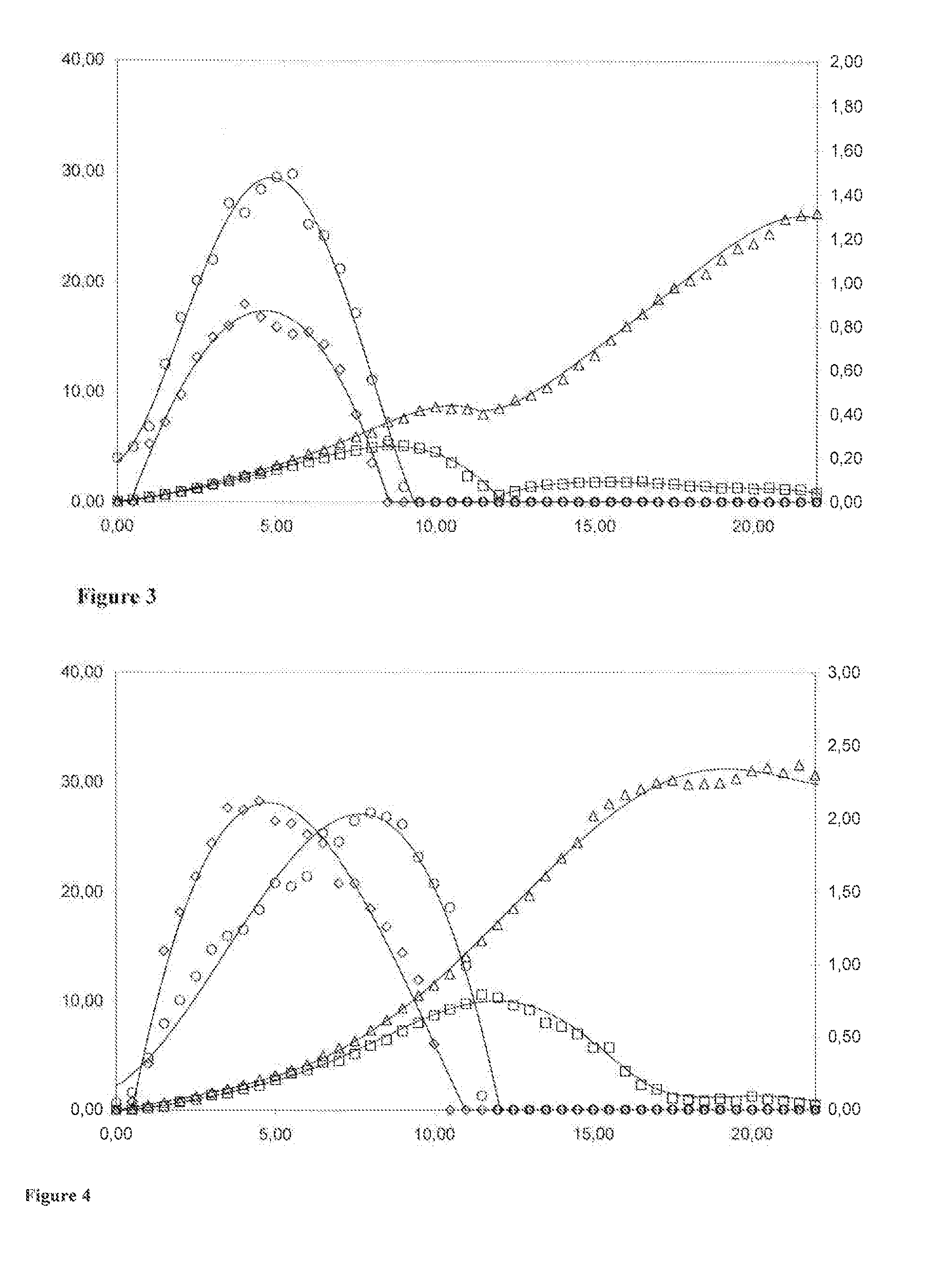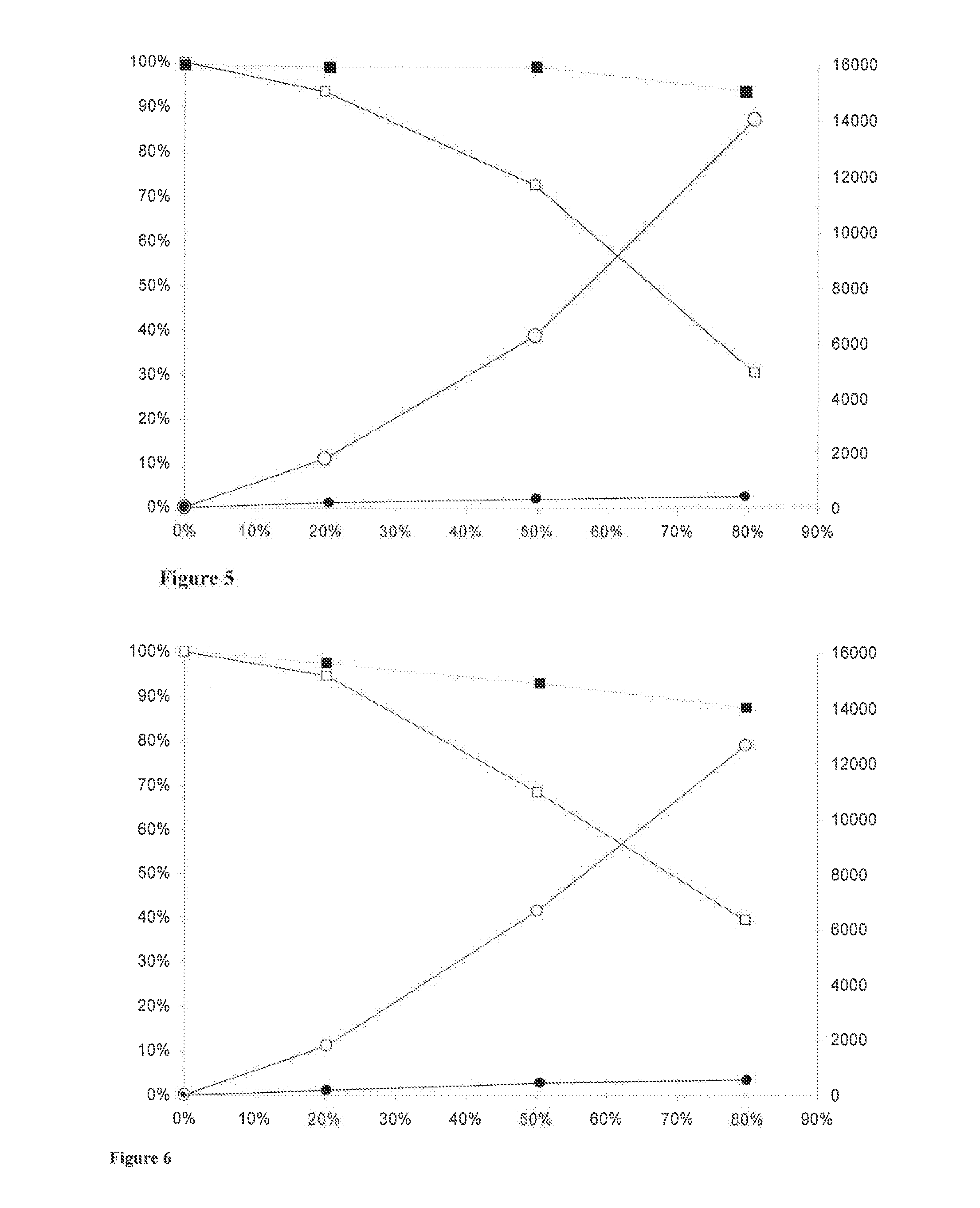Use of a carbonaceous substitute for the production of yeast
- Summary
- Abstract
- Description
- Claims
- Application Information
AI Technical Summary
Benefits of technology
Problems solved by technology
Method used
Image
Examples
example 1
Obtaining Genetically Modified Strains of Yeast According to the Invention
Material and Methods
[0320]The STL1 (YDR536w) gene encodes the active glycerol permease. This gene was amplified from the genomic DNA of an industrial yeast and sequenced.
[0321]The sequence of the amplified STL1 gene, composed of 1710 nucleotides, was aligned with the nucleotide sequence of the ORF YDR536w originating from the S288c yeast (SGD database). The alignment demonstrated the presence of 7 different nucleotides over the whole sequence, which corresponds to an identity percentage of 99.6%.
[0322]The translation of the nucleotide sequence of the STL1 gene originating from the industrial yeast, leads to a protein of 570 amino acids. The alignment of the protein sequence of the STL1 gene originating from the industrial yeast with the protein sequence of the ORE YDR536w originating from the S288c yeast demonstrated the presence of 3 different amino acids, which corresponds to an identity percentage of 99.5%....
example 2
Production of Yeasts from Genetically Modified Strains According to the Invention on a Mixture of Glycerol and Sugar
Material and Methods
(i) Semi-Continuous Mode
[0345]The production of fresh yeast is carried out in the manner described in the work “Yeast technology”, 2nd edition, 1991, G. Reed and T. W. Nagodawithana, published by Van Nostrand Reinhold, ISBN 0-442-31892-8.
[0346]The fermenter used is seeded with a certain initial volume containing rater, a little nitrogen and phosphorus, nutritive elements such as vitamins and minerals.
[0347]Before seeding the fermenter with a certain quantity of live yeast strains, a little molasses is added in order to start the culture. The pH and the temperature are adjusted to values comprises respectively between 3.5 and 7 for the pH (with simultaneous supplies of acid or base as needed), and between 30 and 34° C. for the temperature (with heating or cooling of the fermenter as needed). The so-called “fed-batch” culture in semi-continuous mode i...
example 3
Obtaining Natural Variants According to the Invention
Material and Methods
(i) Direct Screening
[0389]A population of cells of a strain of standard breadmaking yeast is subjected to UV radiation of 1200 to 2000 J / cm2 leading to a 99.9% loss of viability.
[0390]The natural variants obtained are isolated on a non-selective medium (YPG), then screened on the basis of their yield and their consumption of glycerol in the presence of a mixture of glycerol and sugar.
[0391]The screening is carried out after culture in semi-continuous mode, in the presence of a mixture of glycerol and sugar comprising 20% glycerol as saccharose equivalent, in 1-litre, then 7-litre fermenters.
[0392]The experimental conditions of the semi-continuous culture are as described in Example 2 over a period of 22 hours, with an average growth rate of 0.16 h−1.
(ii) Screening after Chemostat Enrichment
[0393]A population of cells of the same starting strain as previously is subjected to increasing levels of UV radiation (fr...
PUM
| Property | Measurement | Unit |
|---|---|---|
| Fraction | aaaaa | aaaaa |
| Fraction | aaaaa | aaaaa |
| Fraction | aaaaa | aaaaa |
Abstract
Description
Claims
Application Information
 Login to View More
Login to View More - R&D
- Intellectual Property
- Life Sciences
- Materials
- Tech Scout
- Unparalleled Data Quality
- Higher Quality Content
- 60% Fewer Hallucinations
Browse by: Latest US Patents, China's latest patents, Technical Efficacy Thesaurus, Application Domain, Technology Topic, Popular Technical Reports.
© 2025 PatSnap. All rights reserved.Legal|Privacy policy|Modern Slavery Act Transparency Statement|Sitemap|About US| Contact US: help@patsnap.com



